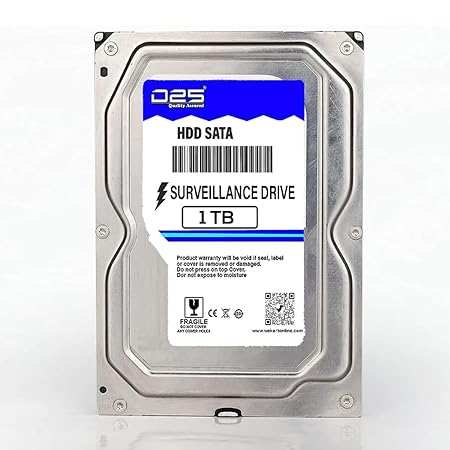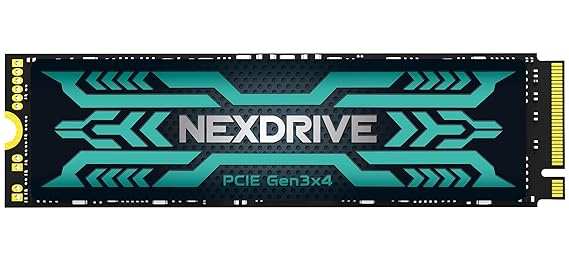In today's digital age, the importance of data storage cannot be overstated. With the ever-growing amounts of information we generate, from cherished memories in the form of photos to crucial documents and software, understanding how to effectively manage and utilize storage solutions is essential. At Sata ssd of this management lies a critical component: the internal hard disk. This device, often taken for granted, plays a pivotal role in the functioning of our computers and laptops, serving as the repository for our most valuable digital assets.
An internal hard disk is a sophisticated piece of technology designed to store data persistently, allowing us to access and organize our information with ease. By delving deeper into its mechanics and functionality, we can unlock a greater appreciation for its capabilities and the impact it has on our everyday computing experience. From classic spinning hard drives to modern solid-state drives, each type brings unique advantages that cater to different needs, making it essential to understand their nuances in order to make informed choices for our storage requirements.

Understanding Internal Hard Disk Components
An internal hard disk is made up of several key components that work together to store and retrieve data. At its core is the magnetic platter, a flat disk coated with a magnetic material. This platter is where data is actually stored, and it can come in various sizes, typically ranging from 120 to 4000 gigabytes or more. The data is organized in concentric circles called tracks, and each track is further divided into smaller units called sectors.
Another crucial component is the read/write head, which is responsible for accessing the data on the platters. The head floats just above the surface of the spinning platter and uses electromagnetic fields to read data from or write data to the disk. This process is precise and rapid, allowing for quick access to stored information. The read/write head is mounted on an actuator arm that moves back and forth across the platter as needed, enabling it to access various tracks.
Additionally, the internal hard disk includes a spindle motor that spins the platters at high speeds, typically around 5400 or 7200 revolutions per minute. The speed of the spinning platters directly affects data transfer rates, making this motor an essential part of performance. Together with the disk controller, which manages data flow between the hard disk and the computer, these components create a reliable storage system for digital information.
The Role of Internal Hard Disks in Data Storage
Internal hard disks serve as the primary storage component in most computers, providing a reliable and efficient means to store vast amounts of data. These hard disks consist of spinning magnetic platters that read and write information, allowing them to hold everything from the operating system and software applications to personal files and multimedia content. Hard Disk Prices of internal hard disks has grown significantly over the years, enabling users to store terabytes of data, which is essential for both personal use and large-scale enterprise applications.
One of the key advantages of internal hard disks is their performance in terms of speed and data retrieval. They offer faster read and write speeds compared to external storage solutions, primarily due to their direct connection to the motherboard. This connection minimizes latency and maximizes data transfer rates, making internal hard disks ideal for tasks that require quick access to information, such as gaming, video editing, and database management. As technology advances, these speeds continue to improve, making internal hard disks an essential component in high-performance computing environments.

Moreover, internal hard disks contribute to the overall security of data. By being housed within the computer case, they are less susceptible to physical damage or theft compared to external drives. Additionally, many internal hard disks come with built-in security features, such as encryption capabilities and advanced data recovery options, which further protect user data. This combination of security and performance solidifies the role of internal hard disks as a crucial element in modern data storage solutions.
Best Practices for Maintaining Internal Hard Disks
Regular maintenance is crucial for ensuring the longevity and reliability of your internal hard disk. One effective practice is to keep the disk clean and free from dust. https://www.harddiskprice.in/collections/internal-hard-disk can cause overheating, which can lead to hardware failures. Use a can of compressed air to gently blow out any dust from the computer case, paying close attention to the areas around the hard disk. Additionally, maintaining a cool operating environment can significantly enhance the performance and lifespan of your internal hard disk.
Another important aspect of maintenance is monitoring the health of your internal hard disk. Utilize disk management software to regularly check the status of your drive, looking for signs of wear and tear or potential failure. Hard Disk Wiki can provide SMART (Self-Monitoring, Analysis, and Reporting Technology) data, which offers valuable insights into the health of your disk. Keeping an eye on these indicators allows you to take proactive measures before any serious issues arise.
Finally, backing up data is a non-negotiable practice when it comes to hard disk maintenance. No matter how well you care for your disk, hardware failures can happen unexpectedly. Regularly Sandisk ssd of your important files to an external drive or a cloud-based service. This ensures that in the event of a failure, your data is safe and can be easily restored. By following these best practices, you can maximize the performance and lifespan of your internal hard disk.
